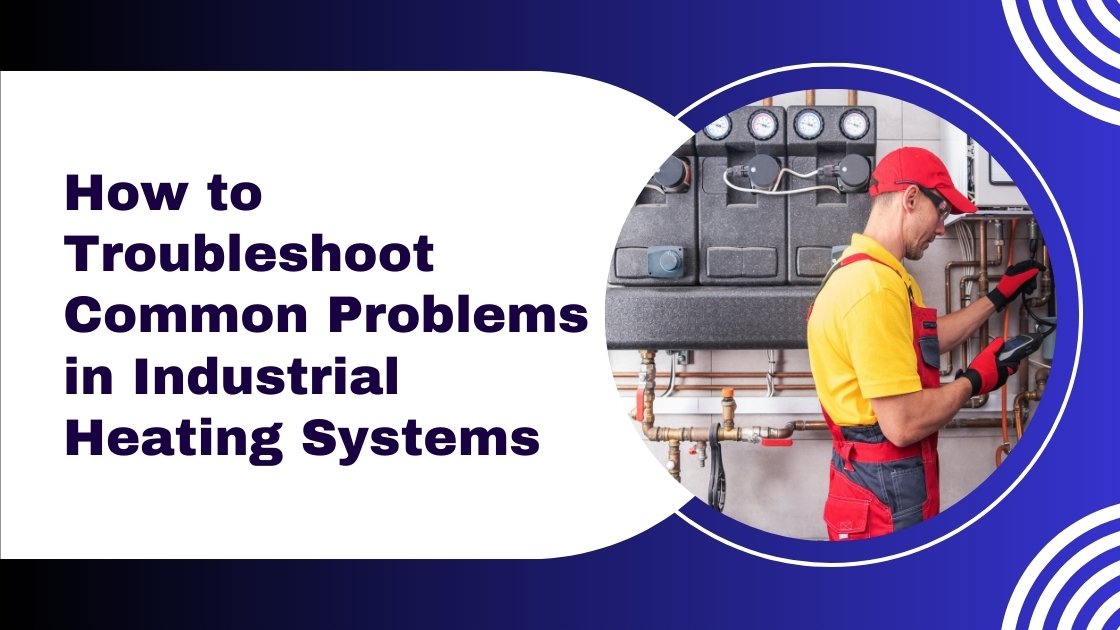Industrial heating systems are crucial for maintaining the correct temperatures in various industrial processes, from manufacturing to food processing. However, like any complex machinery, they can encounter issues that disrupt operations. Troubleshooting these problems efficiently can minimize downtime and prevent costly repairs. This comprehensive guide will help you understand and resolve common issues with industrial heating systems, using simple terms and practical steps.
1. Checking for Power Supply Issues
Power supply problems are often the root cause of many issues with industrial heating systems. If your system is not turning on or is shutting down unexpectedly, start by examining the power supply.
Step-by-Step Process:
1. Verify the Power Switch:
Make sure the power switch on the heating system is in the “on” position. It might seem basic, but sometimes the switch can accidentally get turned off.
2. Inspect Electrical Connections:
Look at all electrical connections for loose or damaged wires. Over time, vibrations and wear can cause connections to loosen, leading to power issues.
3. Check Fuses and Circuit Breakers:
Examine the fuses and circuit breakers associated with the heating system. If you find any blown fuses or tripped breakers, replace or reset them as needed. Blown fuses can occur due to overloads or short circuits.
4. Examine the Power Source:
Ensure that the power source to the system is stable and consistent. Power surges or outages can impact system performance.
Additional Resources:
For more detailed guidance on troubleshooting power issues, visit Electrical Safety Foundation International, which offers insights into electrical safety and maintenance.
2. Inspecting the Thermostat
The thermostat plays a crucial role in regulating the temperature within an industrial heating system. If your system is not reaching the desired temperature or is experiencing temperature fluctuations, the thermostat might be the issue.
Step-by-Step Process:
1. Check Thermostat Settings:
Confirm that the thermostat settings are correct and match the desired temperature. Sometimes, incorrect settings can lead to improper heating.
2. Clean the Thermostat:
Dust and debris can affect the performance of the thermostat. Gently clean the thermostat using a soft brush or cloth to remove any dirt.
3. Test the Thermostat:
Use a multimeter to test the thermostat’s functionality. This tool will help you determine if the thermostat is providing accurate readings and signals to the heating system.
4. Consider Calibration:
If the thermostat is still not working correctly, it may need calibration or replacement. Check the manufacturer’s guidelines for calibration procedures.
Additional Resources:
For further information on thermostat troubleshooting, visit Thermocouple Technologies, which provides in-depth resources on temperature control and measurement.
3. Examining the Heating Elements
Heating elements are responsible for generating heat in the system. Over time, these elements can wear out or become damaged, leading to reduced heating efficiency or system malfunctions.
Step-by-Step Process:
1. Turn Off Power:
Always ensure that the power to the heating system is turned off before inspecting the heating elements. This is crucial for safety.
2. Inspect for Damage:
Look for visible signs of damage, such as cracks, burn marks, or broken elements. Damaged heating elements can cause uneven heating or complete failure of the system.
3. Test Continuity:
Use a multimeter to test the continuity of the heating elements. Continuity testing will help you determine if the elements are functioning properly. If the meter shows no continuity, the element may need replacement.
4. Replace If Necessary:
If you find that the heating elements are damaged or faulty, replace them with new ones. Follow the manufacturer’s instructions for installation.
Additional Resources:
For guidance on maintaining and replacing heating elements, visit Heating Elements Experts, which offers a range of resources on heating element maintenance.
4. Looking for Airflow Problems
Proper airflow is essential for the efficient operation of industrial heating systems. Blocked or restricted airflow can lead to overheating, inefficient heating, or damage to the system.
Step-by-Step Process:
1. Inspect Air Filters:
Check the air filters for clogging or dirt buildup. Clean or replace filters as necessary. Dirty filters can restrict airflow and reduce the system’s efficiency.
2. Check Vents and Ducts:
Ensure that all vents and ducts are free of obstructions. Blocked vents can prevent proper circulation of warm air, leading to uneven heating.
3. Examine the Blower Motor:
Inspect the blower motor and fan for any issues. A malfunctioning blower can affect airflow and heating performance. Ensure that the motor is operating smoothly and quietly.
4. Clean Components:
Regularly clean vents, ducts, and the blower motor to maintain optimal airflow. Accumulated dust and debris can impact system performance.
Additional Resources:
Learn more about airflow issues and solutions at HVAC.com, which provides extensive information on heating, ventilation, and air conditioning systems.
5. Checking for Leaks or Corrosion
Leaks or corrosion in an industrial heating system can lead to significant performance issues and potential damage. Regular inspections can help identify and address these problems before they escalate.
Step-by-Step Process:
1. Inspect for Leaks:
Examine pipes, valves, and other components for any signs of leakage. Leaks can cause loss of heat and reduce the efficiency of the system. Address leaks promptly to prevent further damage.
2. Look for Corrosion:
Check for any rust or corrosion on metal parts. Corrosion can weaken components and lead to system failure. Clean or replace corroded parts as needed.
3. Repair or Replace:
Depending on the extent of the damage, repair minor leaks or corrosion issues. For more severe problems, consider replacing the affected components.
4. Preventive Measures:
Apply anti-corrosion coatings or treatments to metal parts to prevent future corrosion. Regular maintenance and inspections can help identify potential issues early.
Additional Resources:
For tips on preventing and managing leaks and corrosion, visit Industrial Equipment News, which offers insights into equipment maintenance and management.
Conclusion
Troubleshooting industrial heating systems involves a systematic approach to identifying and resolving common issues. By checking the power supply, inspecting the thermostat, examining the heating elements, ensuring proper airflow, and looking for leaks or corrosion, you can maintain the efficiency and reliability of your heating system.
Regular maintenance and prompt troubleshooting are essential for keeping your industrial heating system in optimal condition. For comprehensive services and solutions, consider reaching out to experts specializing in Industrial Heating Systems in Ajman. This will ensure that your system continues to perform efficiently and effectively, minimizing downtime and maximizing productivity.



